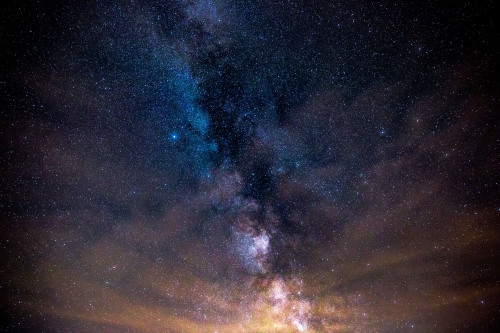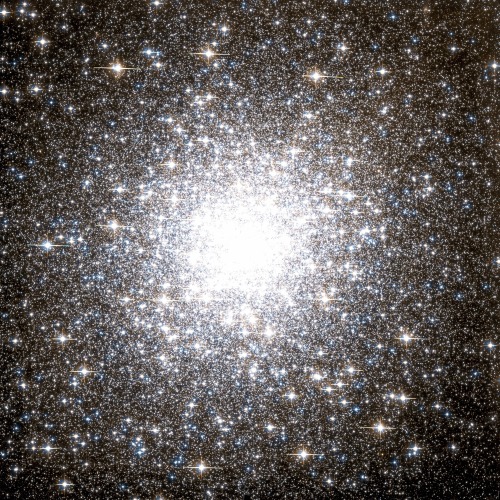Vdb 158 And PLN 110-12.1

Vdb 158 and PLN 110-12.1
Credit: Jimmy Walker
More Posts from Littlecadet-biguniverse and Others

Milky Way js

NGC 7129, Young Stars

Valles Marineris. “Grand Canyon” of Mars.
Image Credit: Viking Project, USGS, NASA

Orion Nebula And Horsehead Nebula

Emission Nebula Sh2-72
js


Jupiter’s North Pole Unlike Anything Encountered in Solar System
NASA’s Juno spacecraft has sent back the first-ever images of Jupiter’s north pole, taken during the spacecraft’s first flyby of the planet with its instruments switched on. The images show storm systems and weather activity unlike anything previously seen on any of our solar system’s gas-giant planets. “First glimpse of Jupiter’s north pole, and it looks like nothing we have seen or imagined before,” said Scott Bolton, principal investigator of Juno from the Southwest Research Institute in San Antonio. “It’s bluer in color up there than other parts of the planet, and there are a lot of storms. There is no sign of the latitudinal bands or zone and belts that we are used to – this image is hardly recognizable as Jupiter. We’re seeing signs that the clouds have shadows, possibly indicating that the clouds are at a higher altitude than other features.”
Credit: NASA/JPL-Caltech/SwRI/MSSS

Saturns north pole hexagon.
js

Gum 29 Star-Forming Region **follow viralography for more amazing photos**

150,000 Stars - The Messier 2 Star Cluster
This massive Star Cluster (The Messier 2 Star Cluster) is 13 billion years old - making it one of the oldest star clusters in the Milky Way Galaxy. Not only is this Star Cluster ancient, it is one of the largest known star clusters. On a clear night away from light pollution, you can see M2 with the naked eye as a faint blur in the constellation Aquarius.
Credit: NASA/Hubble/SIMBAD Astronomy db

Uranus’ icy moon Miranda wowed scientists during the Voyager encounter with its dramatically fractured landscapes.
via reddit
-
 cavegirl66 liked this · 4 years ago
cavegirl66 liked this · 4 years ago -
 haiderqassam liked this · 5 years ago
haiderqassam liked this · 5 years ago -
 saltythexfilesindianjonescop liked this · 5 years ago
saltythexfilesindianjonescop liked this · 5 years ago -
 art-rat liked this · 5 years ago
art-rat liked this · 5 years ago -
 hyperionova liked this · 5 years ago
hyperionova liked this · 5 years ago -
 decadentsuittimemachine reblogged this · 5 years ago
decadentsuittimemachine reblogged this · 5 years ago -
 randomperson-es liked this · 5 years ago
randomperson-es liked this · 5 years ago -
 prince-of-places liked this · 5 years ago
prince-of-places liked this · 5 years ago -
 melisa-may-taylor72 liked this · 5 years ago
melisa-may-taylor72 liked this · 5 years ago -
 sirikenobilegends reblogged this · 5 years ago
sirikenobilegends reblogged this · 5 years ago -
 sirikenobilegends liked this · 5 years ago
sirikenobilegends liked this · 5 years ago -
 kaleka0 liked this · 5 years ago
kaleka0 liked this · 5 years ago -
 vor765wm liked this · 6 years ago
vor765wm liked this · 6 years ago -
 jbrfreitas liked this · 6 years ago
jbrfreitas liked this · 6 years ago -
 tngbabe liked this · 6 years ago
tngbabe liked this · 6 years ago -
 its-just-fiona liked this · 6 years ago
its-just-fiona liked this · 6 years ago -
 ayeznevaclose reblogged this · 6 years ago
ayeznevaclose reblogged this · 6 years ago -
 ayeznevaclose liked this · 6 years ago
ayeznevaclose liked this · 6 years ago -
 bringmethemermaids liked this · 6 years ago
bringmethemermaids liked this · 6 years ago -
 battlestarblazer reblogged this · 6 years ago
battlestarblazer reblogged this · 6 years ago -
 hedownwithskeletor liked this · 6 years ago
hedownwithskeletor liked this · 6 years ago -
 saucerkommand reblogged this · 6 years ago
saucerkommand reblogged this · 6 years ago -
 saucerkommand liked this · 6 years ago
saucerkommand liked this · 6 years ago -
 ghostrl liked this · 6 years ago
ghostrl liked this · 6 years ago -
 16fahri liked this · 6 years ago
16fahri liked this · 6 years ago -
 metalzoic liked this · 6 years ago
metalzoic liked this · 6 years ago -
 cripple-cat liked this · 6 years ago
cripple-cat liked this · 6 years ago -
 mayshamrock reblogged this · 6 years ago
mayshamrock reblogged this · 6 years ago -
 mayshamrock liked this · 6 years ago
mayshamrock liked this · 6 years ago -
 fagdykefrank liked this · 6 years ago
fagdykefrank liked this · 6 years ago -
 maraitzel reblogged this · 6 years ago
maraitzel reblogged this · 6 years ago -
 maraitzel liked this · 6 years ago
maraitzel liked this · 6 years ago -
 fluttershyinreallife liked this · 6 years ago
fluttershyinreallife liked this · 6 years ago -
 smallfryingpan liked this · 6 years ago
smallfryingpan liked this · 6 years ago -
 the-honeymoon-avenue reblogged this · 6 years ago
the-honeymoon-avenue reblogged this · 6 years ago -
 the-honeymoon-avenue liked this · 6 years ago
the-honeymoon-avenue liked this · 6 years ago
GREETINGS FROM EARTH! Welcome to my space blog! Let's explore the stars together!!!
144 posts